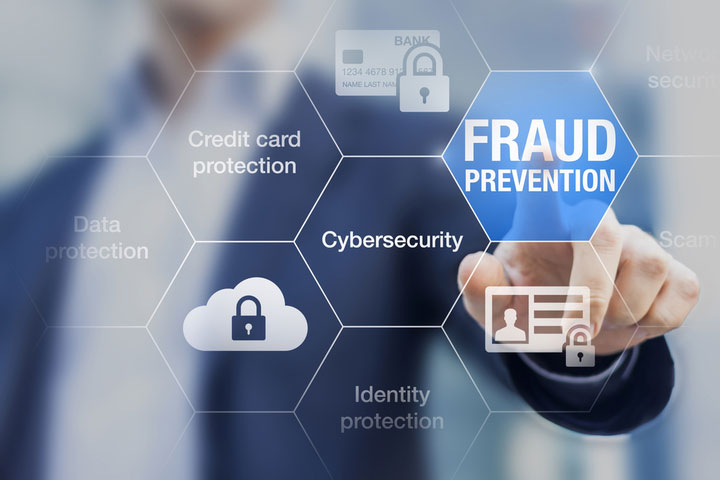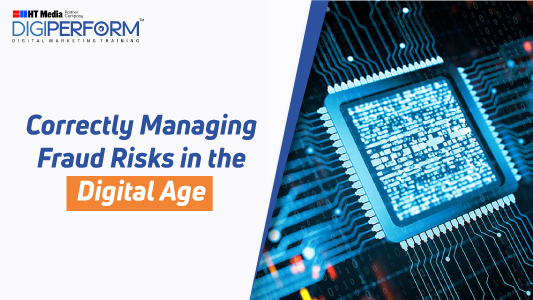In the past few years, frauds have witnessed an upward trend. With frauds increasing by a whopping 70% in 2021, customers lost $5.8 billion to scams and online frauds.
What’s more interesting is that fraudsters don’t just target customers. They’re slowly targeting companies that overlook their online security.
As payment technologies advance with each passing day, it ensures higher risk.

With so much on the table, it’s even more critical to identify and respond to fraud risks before they go out of hand and result in monetary losses.
Proper risk management allows a company to uncover frauds conducted by internal and external stakeholders.
That’s why it’s essential to give importance to risk management, as it reduces the risk of theft, conspiracy, embezzlement, money laundering, extortion, bribery, and corruption. It even helps in closing every security loophole.
Companies must recognize the importance of managing risk in this digital age.
Correctly managing fraud risks in the digital age
Here are a few ways to correctly manage fraud risks in the digital age:
1. Conduct a risk assessment
To minimize financial risks, a company focuses on understanding the areas where the company is vulnerable.
By assessing the kind and type of risk a company is susceptible to, a company creates a fraud risk management plan to minimize financial risks.
The risk assessment considers every type of risk, how it might happen, and the cost involved with each risk. Typically, the first step towards identifying potential risk is starting with employees.
With internal fraud contributing to 57% of the company’s fraud, starting a risk assessment associated with employees is an excellent place to start.

Knowing how employees interact with company resources daily prevents potential internal fraud from occurring.
A part of risk assessment involves establishing a company’s risk tolerance limit. This makes the risk assessment quantifiable and creates a cost-effective framework.
2. Evaluate the existing anti-fraud and compliance programs
When a company understands the importance of controlling the risk of fraud, it focuses on creating a framework that prevents financial fraud.
Evaluating the existing anti-fraud programs and compliance policies and standards is the foundation for building comprehensive anti-fraud processes.
To prevent fraud from occurring, it’s essential to know whether the management conducts, documents, and updates potential fraud vulnerabilities. It also helps determine whether the management explains key fraud risks that might affect a company’s reputation and branding.
Checking the adequacy and usefulness of existing anti-fraud programs is the key to success because it helps create fraud management plans.
3. Develop a fraud response management plan
Companies must develop fraud response strategies to manage fraud risks in the digital age. Using the correct strategy minimizes the impact of fraud that might occur, one that gets discovered and one that comes to the company’s attention.
Developing a fraud response management plan helps a company react to and handle various types of misconduct and fraud in a timely and organized manner.
Typically, the overarching goal of a fraud response management plan is protecting the organization from economic, reputational, and legal risks.
When developing a fraud response management plan, focus on identifying the department that should get notified when fraud occurs, prepare the internal messaging to employees in an event of fraud, and develop plans for the resolution of different types of fraud.
While no company wants fraud to happen, having a response plan positions the company to take immediate action to address the fraud.
4. Use a data analytics tool
Modern-day data analytics tools are capable of extracting and analyzing inaccessible and siloed data.
Data analytics tool uncovers potential risks and identifies the kind of frauds and risks a company is susceptible to in the long run.
Advanced data analytics tools analyze financial and non-financial data across different areas to find anomalous relationships, transactions, and unusual data patterns.
Conducting a rigorous data analysis helps identify fraudulent activities and improves the rate of detecting fraud.

These tools allow a company to decode answers to questions such as what happened, where it happened, how many times it happened, what rules or financial threshold the data breach is, and whether there are any non-compliance issues.
What makes these tools a must-have in the digital age is their ability to raise red flags that help isolate and identify suspicious transactions.
5. Establish the risk tolerance level
So, what’s a company’s acceptable level of risk? The truth is it varies, and there is no size that fits all. For instance, companies working in the stock market might have a more in-built risk than retailers operating in a low-risk vertical.
Assessing and establishing the risk tolerance level is essential because fraud is inevitable irrespective of how effective a company’s risk management strategies are.
A company’s risk tolerance level is the highest percentage of revenue it might be willing to risk losing to potential frauds and risks.
When a company gets exposed to more risks than it is willing to accept, the company might soon go out of business.
6. Conduct risk-based monitoring
Data collection and analysis, including instances of previously detected frauds and reporting mechanisms, is essential for risk-based monitoring.
In risk-based monitoring, a company reduces the volume and frequency of monitoring, as data get verified only at high-risk websites based on triggered events.
With risk-based monitoring, a company often conducts fraud awareness training and communicates the results of already occurred frauds.






